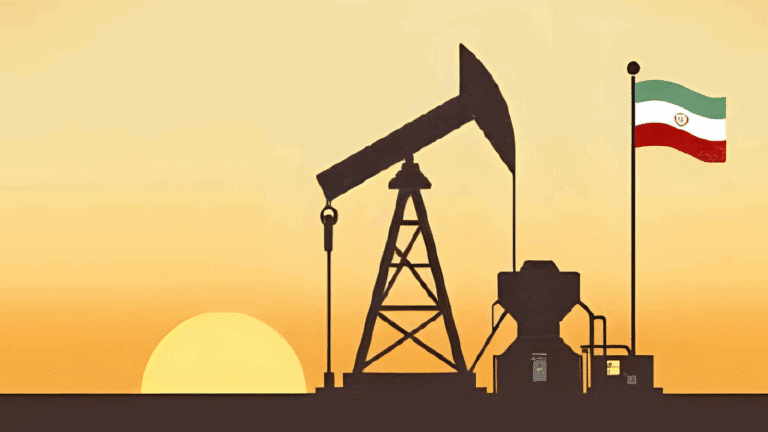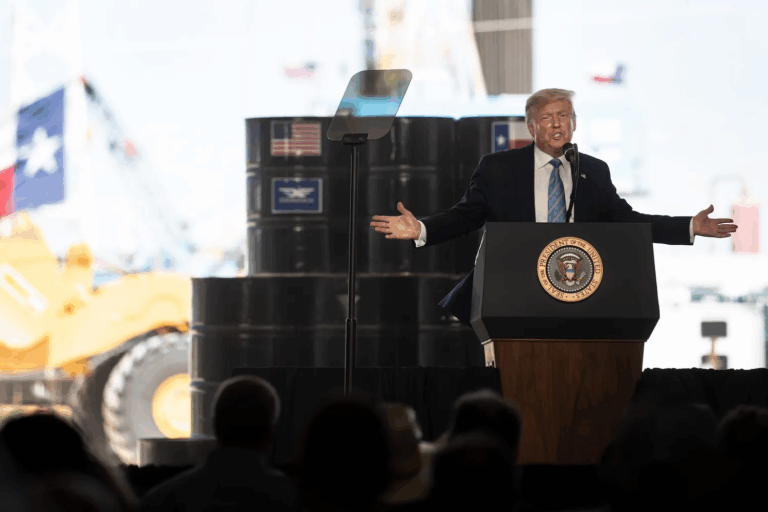Trump team pushes for ouster of top IEA official
The administration and its Republican allies in Congress say the International Energy Agency discourages fossil fuel investments around the world.
Current Access Level “I” – ID Only: CUID holders, alumni, and approved guests only
Commentary by Richard Nephew • November 10, 2020
This commentary represents the research and views of the author. It does not necessarily represent the views of the Center on Global Energy Policy. The piece may be subject to further revision. Contributions to SIPA for the benefit of CGEP are general use gifts, which gives the Center discretion in how it allocates these funds. More information is available at Our Partners. Rare cases of sponsored projects are clearly indicated.
The last four years have borne witness to a range of new sanctions, policies, and approaches around the world.
Some of these were predicted in November 2016, as Donald Trump took to sanctions far more than his predecessors, using them to tackle virtually every foreign policy problem he encountered. In fact, Trump’s use of sanctions transcended their typical usage in both form and content, as he employed tariffs and other more traditional “trade” tools to try to manage a bevy of nontrade problems. The long-term effects of this decision have yet to be felt or properly understood. It may be that Trump was ahead of the curve in seeing the fracturing of the global liberal economic order and employed the US economy for strategic advantage while it was still ahead. It may also be that Trump undermined the US position in the global economy through his policies, if not actually hastened the demise of this system of managing global economics. Time and the evolution of policy in other global power centers will eventually tell.
The shifting approach to sanctions policy by a variety of other states is a manifestation of the potential effects of Trump’s policy choices in using US economic power. From the EU to Russia to China, other countries have changed long-standing policy approaches as they relate to sanctions, either to respond to or perhaps to take advantage of the new paths forged by the United States. The actions that they have taken are not “unprecedented” per se, as each of these countries or organizations has—at times—embraced policies that are consistent with some of these current actions. But, in aggregate, they describe an overall shift in how the world treats sanctions and trade policy, particularly that as practiced by the United States.
The last four years have served as a substantial awakening for the European Union. In 2017, during meetings I had with European government colleagues and think tanks, most decried even the possibility of a break with Washington over its use of sanctions. These contacts noted the broad harmonization over sanctions with the United States and especially in dealing with key challenges facing the international community, such as the proliferation of weapons of mass destruction, terrorism, and human rights violations. In 2018, there was widespread incredulity at the idea of contesting the US decision to withdraw from the Joint Comprehensive Plan of Action (JCPOA) through any means other than diplomatic engagement. Chancellor Merkel and President Macron’s May 2018 public decision to not challenge US sanctions against Iran via legal mechanisms represented the specific renunciation of a more confrontational approach. Even if—later on in 2018—the EU updated its statutes so as to provide permission for its member states to retaliate against the United States for any sanctions imposed against its companies with respect to Iran, the message conveyed to businesses and banks was clear: we disagree with Washington, but we will not back you.
Fast-forward to 2020, and the picture looks markedly different. Prior to the poisoning of Russian opposition politician Alexei Navalny, the EU was discussing—including in public—the concept of establishing mechanisms to push back on the United States were it to sanction EU companies involved in the construction of the Nord Stream 2 pipeline. The EU’s high representative for common foreign and security policy, Josep Borrell, stated on June 25 that “the Commission is preparing the ground for the adoption of an enhanced sanctions mechanism that will improve Europe’s resilience to the effects of extra-territorial sanctions imposed by third countries.” German Foreign Minister Maas complained to US officials about threats issued against German and other European companies in connection with the same project. In August, 24 of 27 EU missions in the United States presented a formal complaint to the State Department concerning the threats made against their interests in this regard.
Though these incidents relate to one major sanctions topic—Russia and Nord Stream 2—it would be wrong to describe them as solely connected to the Russia issue. Instead, they are simply the latest in a pattern of policy changes coming from the EU in recent years that have been prompted by decisions made in the United States. Another example includes the creation of the Instrument in Support of Trade Exchanges (INSTEX) to enable trade with Iran, notwithstanding US pressure on Europe’s banking system. INSTEX has not worked as planned, with only one confirmed transaction in the over two years of its existence. But in terms of its ambition, its creation was a significant departure from roughly 20 years of European policy alignment with the United States concerning Iran and the use of sanctions. Since INSTEX was formed, the Europeans have witnessed the United States taking even sharper turns away from a collaborative path, including by choosing to snap back UN Security Council sanctions against Iran despite near unanimous global rejection of its legal legitimacy in doing so, a stance spearheaded by European governments. Even comparatively marginal developments—at least in terms of their practical effect—have now drawn regular condemnation, such as the US decision to impose sanctions on civil servants at the International Criminal Court.
In fact, in its failure, INSTEX may have put the spotlight for Europeans on the central challenge they believe they now face: how to create an independent, sovereign financial system from that of the United States. Though many have viewed this possible outcome with skepticism previously, the author noted in 2015 that it was a logical risk of the US overuse of sanctions. According to European officials, this was made even more stark when Donald Trump stormed out of a G-7 Summit in 2019, saying it “triggered the idea of European sovereignty,” which may include “promoting the international role of the euro.” Europe is now considering means by which it might defend itself, as noted with respect to Nord Stream 2, and is also considering the use of sanctions against its own targets. The recent threat to target Turkey over the dispute about natural gas resources in the Eastern Mediterranean is a case in point: it truly may represent an unprecedented willingness to use sanctions not just to defend “universal” interests such as counterterrorism or human rights, as has historically been Europe’s focus, but now to use them to advance European economic security interests.
Are we on the precipice of a new, consolidated European approach to sanctions that challenges that of the United States? The answer is almost certainly no, given the institutional and bureaucratic hurdles that would still remain to enacting such a policy. The requirement for consensus foreign policy decision-making is particularly crucial, but here, too, there are potential changes coming, ironically perhaps prompted by the Cypriot refusal to support sanctions against Belarus until measures are imposed on Belarus. Borrell spoke upon his confirmation as high representative of the European Union about the need to reconsider unanimity in foreign policy. Indeed, the sum total of the steps taken thus far suggests that old conceptions about EU policy approaches need to be reconsidered.
Looking for immediate challenges to the United States is not hard, though, if we broaden our aperture to include China. Though the Chinese have only recently begun exploring possible uses of sanctions policy as part of their national security tool kit, their interest in it is real and has been sustained.
China has now also begun exploring options for directly countering US sanctions pressure. As analysts look to Washington to observe how the United States will use sanctions and other economic tools to put pressure on China, there is sometimes less attention paid to Chinese retaliation. On August 28, though, China underscored its readiness to use its authorities to respond to sanctions threats when it said that it would require an export control review of the sale of TikTok to any US firm. Further press reports clarified that the Chinese were establishing a more general set of enhanced export controls and licensing on a variety of other technological applications, leading a variety of other countries to consider off-shoring some of their R&D activities that until now were being conducted in China.
In and of itself, this is nothing terribly new for China, which has long approached the issue of foreign involvement in its economy as a one-way street. Investment in China has been welcomed in theory but with conditions that reduce some of the benefits to foreign companies and increase the concerns about their intellectual property. For these reasons, trade talks between the United States and China have long featured negotiations about these topics, as have China’s talks with European and other powers.
What is different is that the Chinese are now advertising their readiness to use these tools as a means of creating pressure on the United States and its companies. As noted in a previous essay published by Brookings, the result is that China has begun to flip its leverage approach from incentivizing investment in China to using its market share to punish as well as use sanctions tools that—until recently—had been the province of the United States and European Union.
China has also begun to prepare more intensively to manage a world in which access to Western financial services is difficult or unpalatable. On July 29, a report leaked out from the People’s Bank of China (PBOC) that urged other Chinese banks to prepare for expanded US sanctions by developing and using non-SWIFT communications channels for cross-border transactions. Though the report was part of a broad “contingency planning” activity underway at the PBOC rather than an ongoing activity, the fact that PBOC is planning for such eventualities raised concerns in the banking system about the creation of alternative mechanisms for processing payments. As with its threat to use its markets to create leverage, this is not a particularly new thought; China and other countries of the “BRICS” group—Brazil, Russia, India, China, and South Africa—have contemplated this publicly in the past. What is new is that it is finding its way into advice and guidance documentation, a signal of intensified interest in such a concept if not practical ability to bring it into effect as yet.
In fact, beyond looking at ways to escape US sanctions leverage, Russia has also been taking a page from the United States in formalizing its sanctions rules. In a little noticed piece of Russian legislation introduced in July, the Russian government is considering expanding its sanctions law so as to authorize restrictive measures against not only those it sanctions but also entities that are more than 25 percent owned directly or indirectly by sanctioned parties. The legislation specifies that its target is Ukraine, but the principle is sufficiently robust that it could find its way into more general usage. For its part, Ukraine has been a stalwart supporter of sanctions against Russia, urging EU action and taking its own to add Russian entities and individuals to its own sanctions list.
None of the aforementioned developments augurs on its own a sea change in the usage of sanctions tools internationally. Nor would the adoption of all of them constitute on their own a severe break with past practice within the modern global economy. What seems more significant is that they are happening at the same time and while traditional boundaries between trade disputes, foreign policy fighting, and domestic concerns appear to be dissipating. In some cases, this may be laudable, such as is the case with sanctions targeting human rights abuses. But a world in which sanctions tools are used too frequently and in response to a wide assortment of perceived ills has its own perils, not least the dilution of available leverage to deal with extraordinary threats.
Imagine a world in which there are no trade links. Beyond the immediate economic consequences, there are geopolitical ones as well. The theory behind the European Union and other trading blocs is, in part, that those links can reduce the risk of conflict by raising its costs; you don’t war with those upon whom you depend for your daily bread. Sanctions policy has value for the same reason: threatening to curtail ties is supposed to be so problematic that, with sanctions threatened and occasionally used, conflicts can be avoided. This is not, however, the current paradigm. Instead, we see the possibility of protracted sanctions use and not just in the isolated cases such as that of the United States against Cuba. Coupled with the intractable politics that surround some sanctions cases, there is a reasonable possibility that it will become harder still to remove sanctions while all the time it becomes easier—and more widespread practice—to employ them in a wide range of scenarios and by a wide range of countries. This is not conducive to orderly or congenial international affairs.
It remains unclear whether Iran retains the ability to develop nuclear weapons quickly.

The report outlines five foundational choices if a stockpiling strategy is adopted, as bipartisan support suggests is possible.

The war with Iran shows why hopes for energy independence are inadequate.

Full report
Commentary by Richard Nephew • November 10, 2020